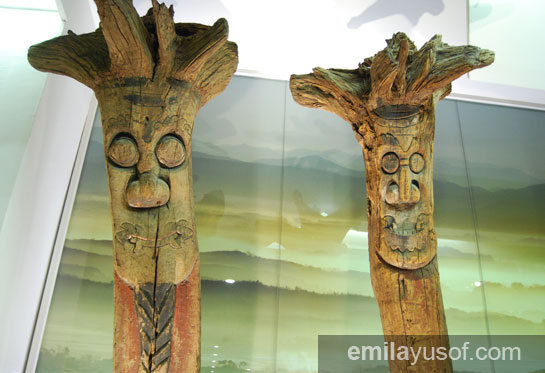-
Art & Places: Jangseung, South Korea
When my husband and I visited Korean Folk Village on our last day in South Korea, these totem poles greeted us. Lucky for me, I visited National Folk Museum of Korea a day before that and knew that it is called Jangseung.

Jangseung totem poles, Korean Folk Village.

Couple Jangseung looking down at me. National Folk Museum of Korea.
Jangseung is regarded as one of the earliest examples of non-figurative art, in which a human face is carved on a wooden pole (tree trunk). Jangseung has the face of traditional Korean military officer with angry eyes, snaggle teeth and a hat on top of the pole with an inscription down at the middle. The inscription bears the meaning of ‘Great General Under Heaven’ for males, and females ‘Female General Under Earth’. These wooden totem poles, erected in groups or pairs at the entrance of Buddhist temples or villages, were worshipped as village guardians or deities with magical powers that drive out demons. Jangseung is also indicated as the border between neighbouring villages.
The history of Jangseung is dated back more than 2000 years ago. Once considered a deity, it is mostly a decorative piece now and commonly placed at the gates of large places to indicate entrances.
Jangseung is considered an organic work of art and is generally expected to last about a hundred years due to nature’s harsh elements.
I found one interesting blog post about Jangseung by Nick Elwood in his blog: A Korean Compendium. His blog post: Fascinating Physogs – A Tour of Some Korean Totem Poles explores the many types of Jangseung. Go read it.